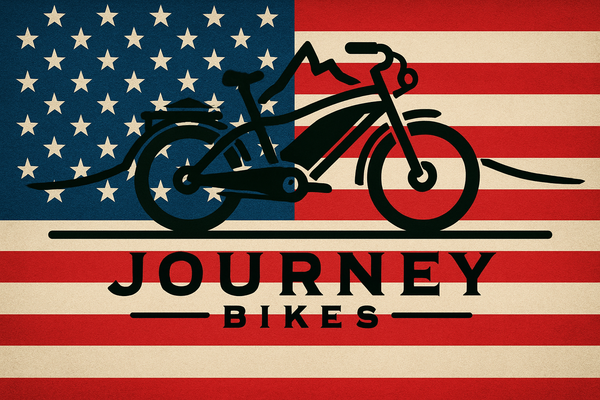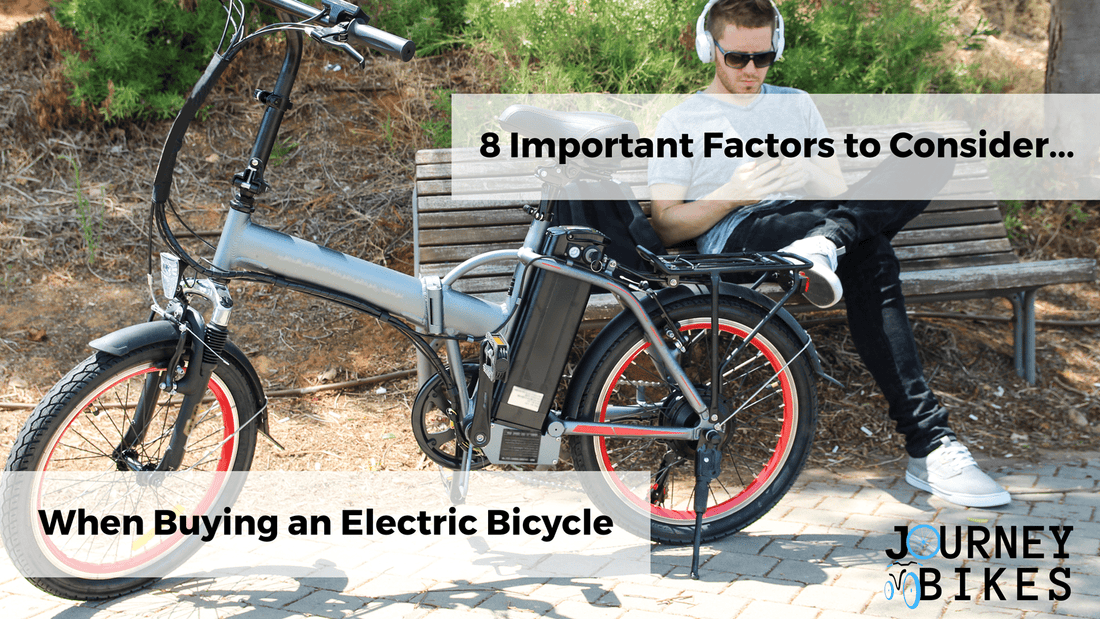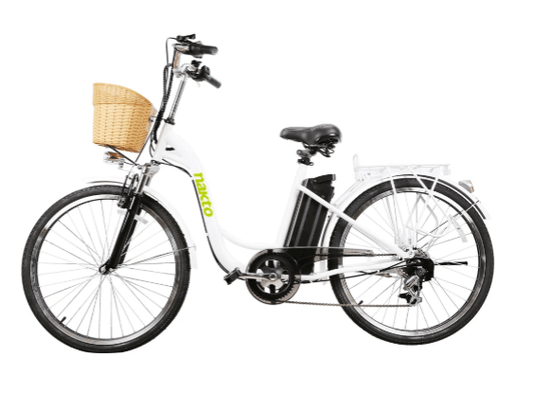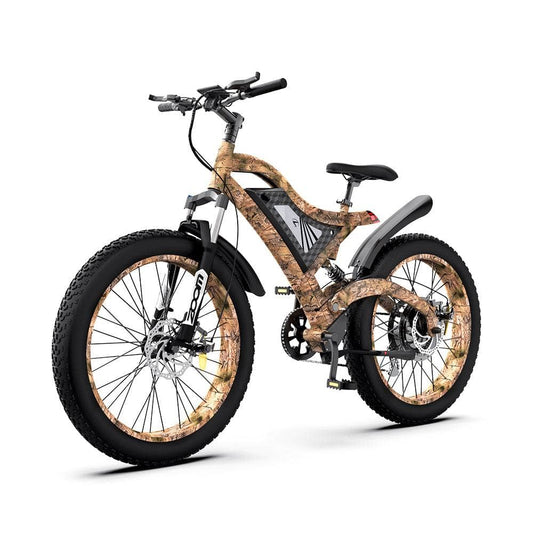Electric Bike Buyer's Checklist
There are many factors to consider when deciding on an electric bike. Below we briefly touch on what we feel are the 8 most common factors that are important to our customers when deciding on electric bike type and brand.
1. What is Your E-Bike Budget?
2. What is the Correct Bike Size for Your Height?
3. What is the Electric Bike Weight?
4. What Electric Bike Style Do You Prefer and What's Your Intended Use?
5. Do you want Rim brakes or Disc Brakes?
6. What are the Electric Bike Watts, Voltage, & Amp Hours?
7. Do you want Mid-Drive or Hub-Drive Motor?
8. What are the Electric Bike Pedal-assist and Throttle Options?
Choosing the right electric bike is important to make certain that your e-bike is comfortable and fits you well. First, you need to consider what you are looking for with regards to size, style, and features. We can assist you in finding a bike that not only fits well, but is appropriate for your lifestyle.
Although e-bikes are becoming more popular, most bike shop employees, particularly in the US, are unfamiliar with electric bikes so it is best to speak with an electric bike expert.
First of all, don’t be deterred, we are here to help! There are certain qualities that you will want to look for in a bike to ensure it will suit your needs. Below is your electric bike buyer's guide with a more in-depth description of each of the steps to decide on an electric bike.
What is your electric bike budget?
First, you will need to determine what your budget is. You can find a quality electric bike for under $1000, but it will most likely not have all of the components that a $2,500 electric bike will have.
What is your electric bike size?
Next, you need to decide what size bike will fit you best. Check the specs of the electric bike in question because most of the time the specs will mention what height range the electric bike will work best for. Also, look at the max weight too.
Once you have decided on size and budget, your next step will be to determine which style electric bike you need.
What frame design do you prefer?
Electric bike come in many styles including the electric beach cruiser bike, electric commuter bike, electric fat tire bike, electric folding bike and electric mountain bike styles.
If you prefer to be seated as upright as possible while biking, you may want to go with a beach cruiser, city or commuter electric bike. If you will be taking your electric bike off-road on trails or the beach, you should consider the fat tire electric bikes or electric mountain bikes. And if you live in the city or have minimal space for bike storage, a folding bike is a great option.
Rim Brakes vs. Disc Brakes?
Brakes on an electric bike are much more essential than a regular pedal bicycle because you will be traveling at higher speeds much more frequently. Think about it as the operational equivalent of driving a normal bike down a big hill 100% of the time. There are basically two kinds of brakes, rim brakes and disc brakes.
Disc brakes usually require less frequent maintenance and may provide the strongest braking force, but come with their very own downsides as well. They can be harder to change when the pads are worn down. Disc brakes are not a necessity though.
Rim brakes have been used for many years and have proven to be strong and effective. The fastest race bikes use rim brakes, proving that you do not need to upgrade to disc brakes only to get good braking performance. More essential than disc vs rim brakes is the quality of the brake parts and the brake pads.
What is the gross weight of the electric bike?
The next important specification to consider when selecting an electric bike is weight. What is the weight of the electric bike (including battery = gross weight)? Less expensive bicycles tend to be heavier whereas electric bikes over $2,000 tend to be lighter weight.
If you have to carry your electric bike in and out of a 3rd-floor apartment, up and down stairs, then you may want to consider the lighter weight electric bikes. Also, if you plan on sometimes using pedal power versus the electric motor, you will want to get an electric bike that is not too heavy to pedal electricity-free.
What do the voltage, amp hours and watts say about an electric bike?
Don’t forget to look at the watts of the motor and the voltage and amp hours of the battery. The higher the amp hours, the longer the battery will last before it needs to be recharged. And the higher the watts and voltage, the more powerful and faster the electric bike will be. At this time the most common voltage options are 24V, 36V and 48V. And the standard amp hours are anywhere from 10aH to 15aH or even 17aH.
Voltage refers to the tension a battery can contain. Watts refers to the power output that the motor can provide on a continuous basis and at its peak. But amp hours refers to the range/distance or length of time before the battery needs to be recharged. Therefore, a 48V battery will outperform a 36V battery when climbing steep hills. And a 15aH battery can take you longer distances than a 10aH battery. The battery size and the bike’s controller also affect the amount of energy that the system provides to the motor. The wattage of the motor tells you how much the motor can handle continuously.
Nothing is exact though, and a general rule of thumb is higher voltage suggests higher power/higher top speed; whereas, higher amp hours suggests higher range/distance.
If you’re buying an electric bike for your 15-mile daily commute and are less concerned about reaching high speeds, than pay more attention to the amp hours. If you’re buying an electric mountain bike and plan on climbing steep hills and biking through rough terrain, pay more attention to the voltage and watts.
Mid-Drive Motor versus Hub-Drive Motors
How an electric bike’s system is configured can impact performance.
When electric bikes first started to hit the market, many e-bikes used hub-drive motors. A hub-drive motor is a motor that is situated in the hub of the front or rear wheel and propels the electric bike by spinning whichever wheel it is attached to.
On the other hand, a mid drive motor powers the drivetrain, usually the crankset, and provides a more efficient transfer of energy and power due to its location more directly affecting the crankset and gearing system.
There are advantages and disadvantages of each type, and we don’t recommend one over the other. We put together a list of the pros and cons of each to help you decide which would work best for you!
Hub-drive motors:
| PROS | CONS |
| Require little-to-no maintenance | Usually heavier than mid-drive motors |
| Less likely to fail or wear out | Only allow single gear ratio |
| Chain break? Ride home on just motor | Not as efficient on hills |
| Cheaper than mid-drive motor ebikes | Limited to rim type that comes w/motor |
Mid-drive motors:
| PROS | CONS |
| Gear ratio allows low gears to climb steep hills | High stress on bike components (i.e. chain) |
| Usually smaller/lighter than a hub-motor | Motor is more expensive to replace/repair |
| Changing tire is easier than w/hub-motor | Can’t shift while under motor power or stopped |
| Allows torque sensor of pedal assist to regulate motor based on how hard you push pedals | If chain snaps, there is no way to power bike bc both motor/pedals need chain to drive wheel |
Generally, hub-motors are great for commuters or those who’d like a reliable, low maintenance e-bike. Whereas, mid-drive motors can be useful for those who plan on traversing off-road or hilly terrain. At the same time, commuters might prefer the lightweight mid-drive motor and the off roader may prefer the reliability of the hub-drive!
What are the power assist and throttle options of the e-bike?
Lastly, check the specifications, description, and images to determine what the pedal assist and throttle components allow. Are there throttle only (no pedaling needed), pedal-assist (pedaling + electric power assist), AND pedal only (no electric) options?
Some electric bikes have a button that allows you to turn pedal assist on and off, which allows you to pedal the bicycle without any electric power assisting you.
Some electric bikes do not have a button that turns off the pedal-assist, which means whenever you pedal the electric power turns on. Also, having a throttle, in which you can power the bike by hand with the throttle-only and not have to pedal at all, is a very useful component.
If you have any more questions regarding the specifications and components of an electric bike that you are considering purchasing, feel free to reach out to us anytime!


![Nakto Elegance 2 Electric City Bike [48V 22"]](http://journeybikes.com/cdn/shop/files/19.jpg?v=1739895302&width=533)
![X-Treme Newport Elite Beach Cruiser Electric Bike [24V 300W]](http://journeybikes.com/cdn/shop/products/x-treme-electric-bikes-one-size-metallic-blue-x-treme-newport-elite-24v-beach-cruiser-ebike-3607137910898.jpg?v=1572877629&width=533)

